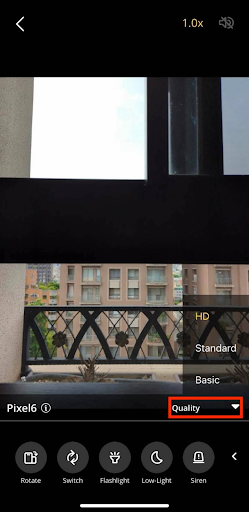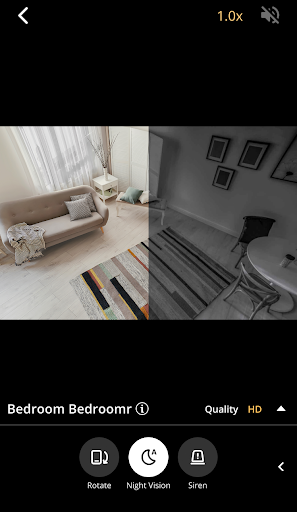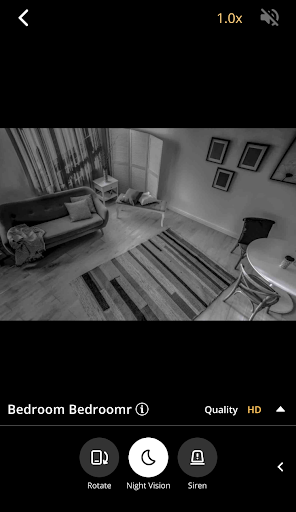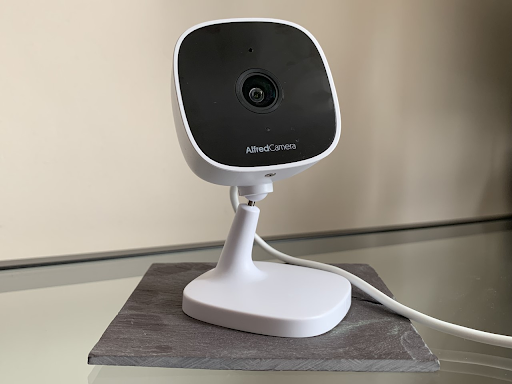A reduced resolution allows for swifter, more fluid live feed viewing, which is why security cameras are usually set to lower quality settings out of the box.
Conventional CCTV used in public is also usually kept at low quality. Since public CCTV records 24/7, this can help to significantly reduce file size.
Below, discover 5 important ways to improve security camera quality if you’re experiencing lower than average video quality.
Why is Security Camera Footage Low Resolution?
Out of the box, security cameras have default settings that are designed to be optimal for the average user.
Hence, video quality is usually reduced in order to improve usability, since most Wi-Fi networks will struggle to transmit high quality video in real-time, particularly in houses where dozens of devices are using the same router.
Why does CCTV have such bad quality?
CCTV is often low quality, with a low frame rate and poor color (or none at all) as well. To record 24/7 in public spaces at high resolutions, high frame rates, and in full-color would create unmanageably large files. It would quickly fill up storage devices, reducing the usefulness of surveillance significantly.
To compensate, the resolution and frame rate are dropped. Audio is also rarely ever recorded, and the video may be recorded in black and white or reduced color. This makes it much more manageable and usable.
6 Ways to Make Security Cameras Better Quality
1. Change the settings
The most important way of improving security camera quality is to simply change the quality settings. Out of the box, quality settings will often be set at a mid or low level in order to cater to the average internet connection.
If you have a strong internet connection, like fiber optic, try putting the resolution higher in order to improve the image quality.
For cameras connected to weaker internet connections (or networks subject to a lot of traffic), higher resolutions may cause excessive lag and reduce frame rate. Always choose a resolution that allows the device to work fastest.

Time for an upgrade? Get better image quality with Premium
AlfredCamera users can enjoy superior HD video quality as part of Alfred Premium. Premium is the best way to use Alfred, giving you the highest quality live feed and recording as well as a host of other great features, including AI-based person detection and motion detection zones and schedules.
Curious? Try out a month of Alfred Premium for just $5.99.
2. Improve the lighting
Darkness reduces image quality. Details become muddier and the image may even appear more pixelated, because visible light is essential to creating an image in a camera lens.
If natural lighting is diminished or unreliable, try experimenting with artificial light setups. Move lamps around. LED lights can be useful in creating clearer images because the light usually appears more ‘white’, which helps illuminate the image.
3. Infrared
In dark spaces or spaces that, for whatever reason, cannot have much artificial or natural light, image quality can significantly reduce. Light is needed to see what’s going on.
Where visible light can’t be obtained, turn infrared lights on in the security camera’s settings if it supports infrared night vision.
Some cameras will have it so this comes on automatically, which can be useful if lighting is temperamental throughout the day. You’ll be able to make out much greater levels of detail in dark spaces by using infrared.


AlfredCam provides true infrared night vision, which can be set to turn on automatically in darkness (left) or enabled manually from the live feed (right).
No infrared? Meet AlfredCam
Whether you’re using mobile devices alongside AlfredCamera or a security camera that doesn’t support true night vision, infrared is an essential way to get over the issues caused by diminished lighting.
Infrared bulbs also allow for reliable night-time surveillance, even when there is no visible light source available.
AlfredCam introduces true infrared night vision to the Alfred line-up, which almost all mobile and tablet devices do not natively support. Learn more about how adding an AlfredCam to your arsenal can help improve your home’s security.

4. Move the device
A trial and error approach to security camera placement can be of benefit if the camera you use doesn’t support infrared and light is constantly diminished.
It’s also useful if the security camera is unable to maintain a consistent connection to the internet network.
If the latter is the case, move the device so that it is nearer to the Wi-Fi router. Alternatively, consider investing in a Wi-Fi extender.
These can be helpful in relaying the signal across parts of the space that don’t receive a solid connection to the router. Try placing one as close to the camera as possible.
Recommended reading: Do I Need a Router for Security Cameras?
5. Reduce number of devices using Wi-Fi
For IP security cameras, the single most important factor in determining image quality is the internet connection.
If the internet is poor and unstable, you may have a hard time maintaining high quality security camera footage regardless of what you do.
If upgrading the internet isn’t an option, try relieving the burden on the wireless network by reducing the number of devices connected to it.
Turn off the Wi-Fi on any devices that don’t require it, and consider switching to mobile data on all phones in the immediate vicinity of the router. This will likely help maintain a more stable connection to the security camera.
6. Stay Updated
The firmware a security camera runs on will be updated and patched throughout its lifecycle.
If you notice a drop in quality all of a sudden or that the camera struggles in other ways, it may be a sign that the firmware is outdated.
If the security camera app prompts you to download updates, don’t ignore it. Always install the latest firmware and software updates to make sure your device is running optimally.
Conclusion
Aside from hardware, the actual image quality a security camera achieves is almost entirely determined by the internet connection of the user.
When it comes to surveillance, a responsive, accurate and functional live feed can be considered more important than image resolution is, which is why security cameras usually come out of the box with mid to low level quality settings enabled. That way, cameras are able to work well for all users, even those with unstable internet connections.
Likewise, traditional CCTV that records to physical storage is usually kept at a low quality. This is because it substantially reduces file size, thereby improving usability.
